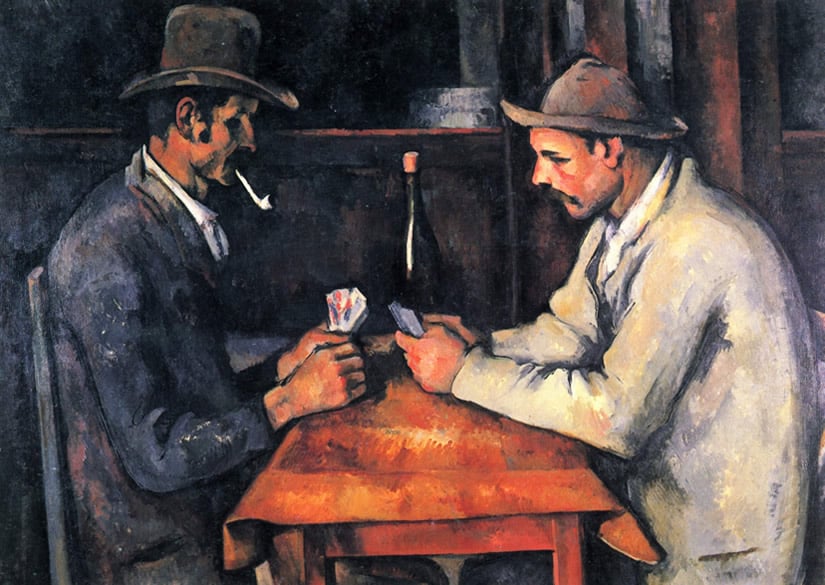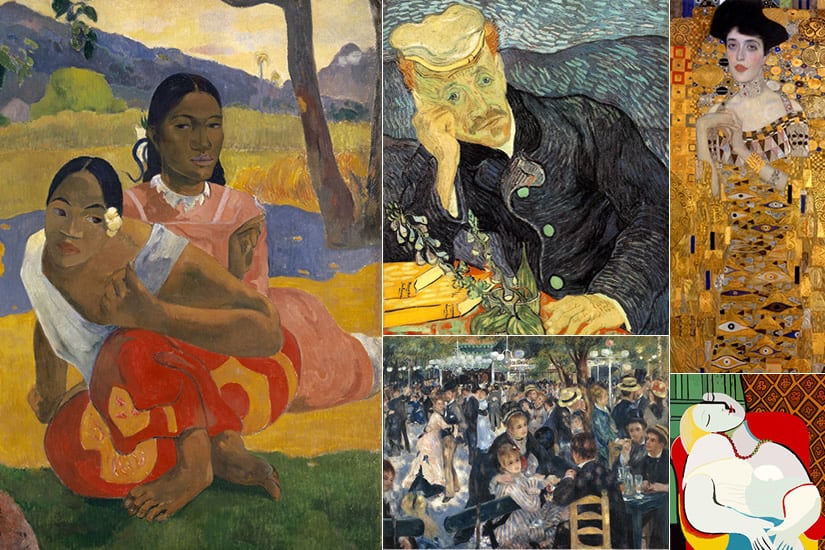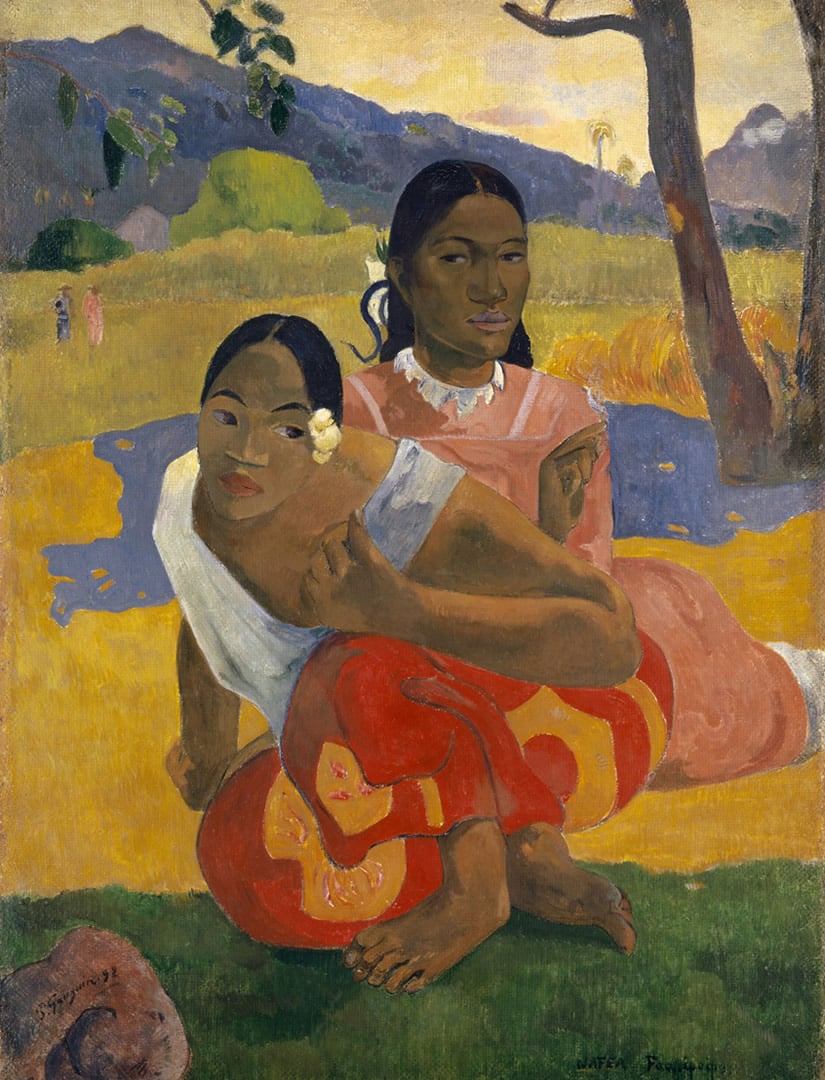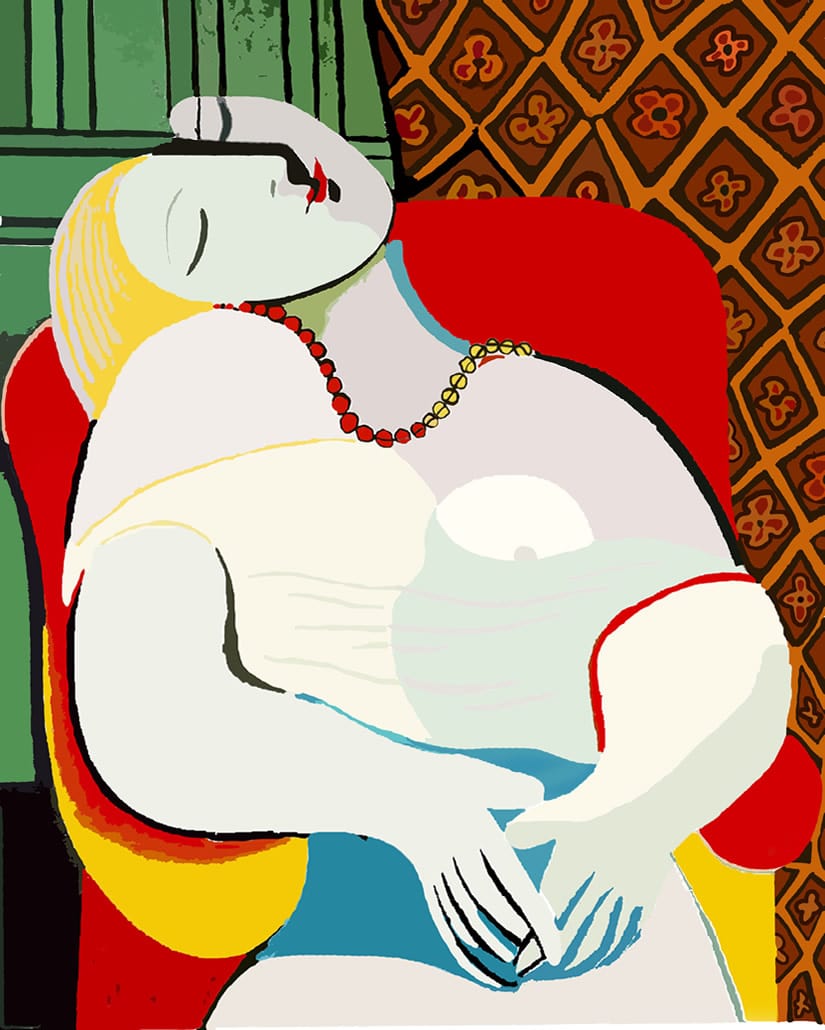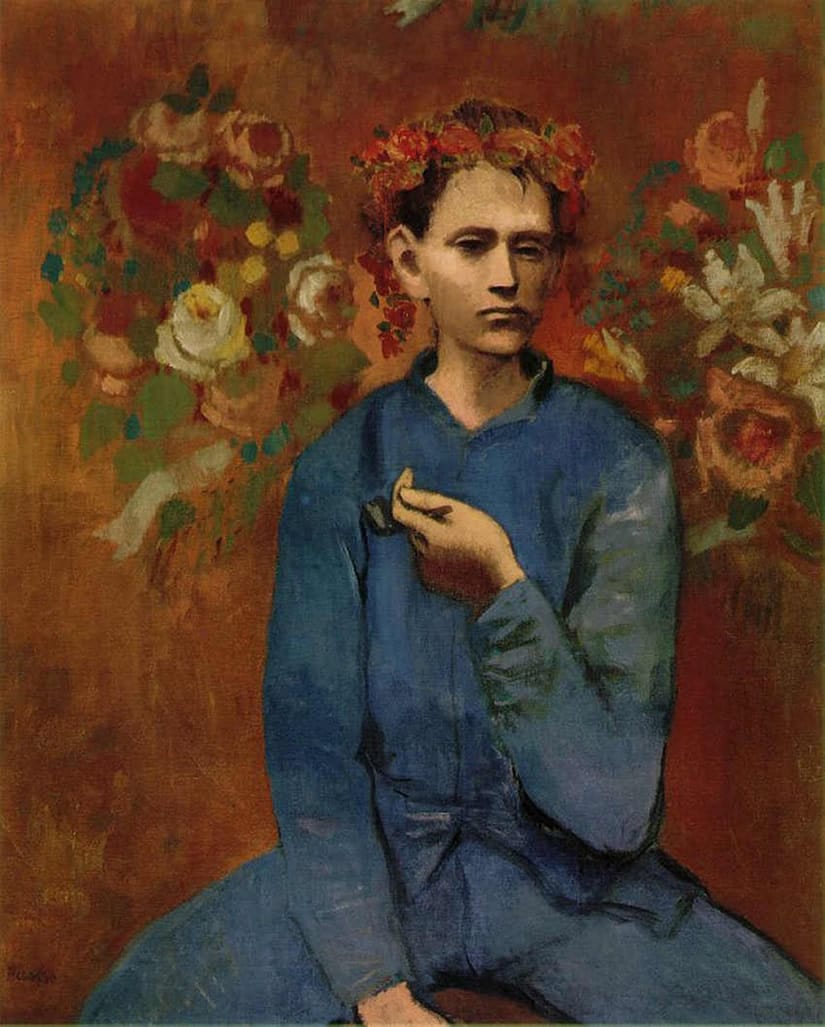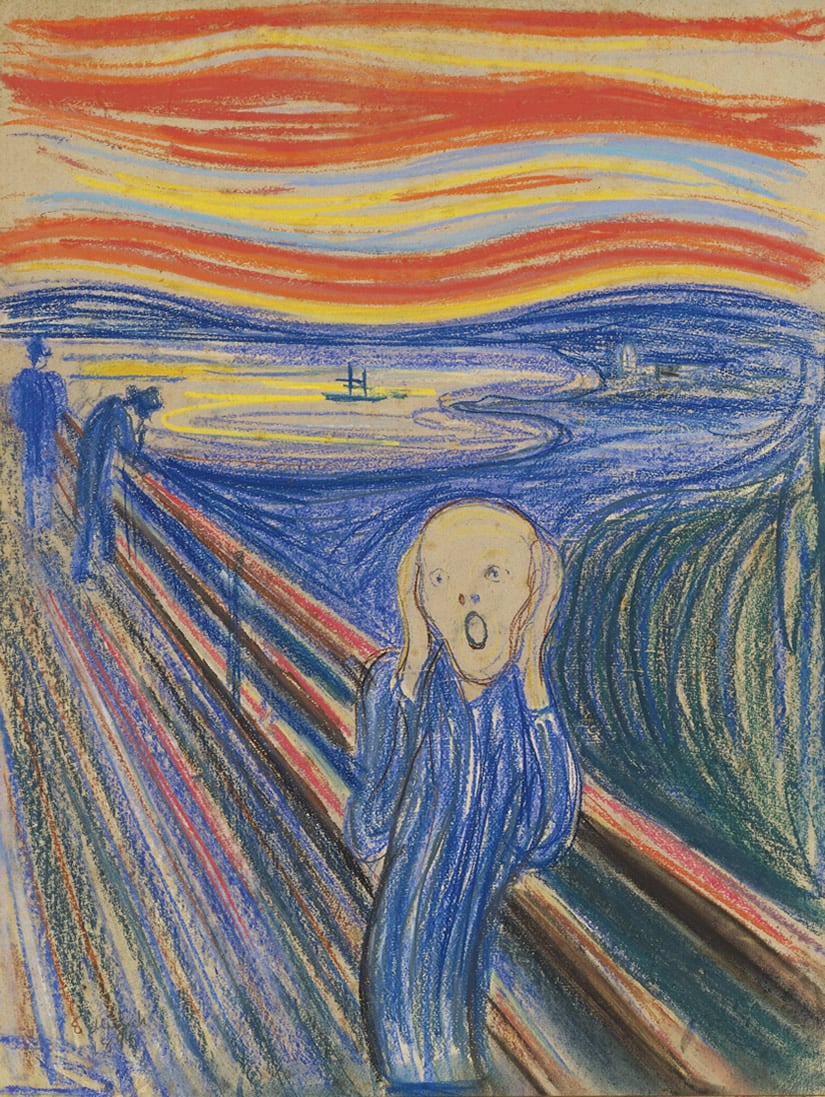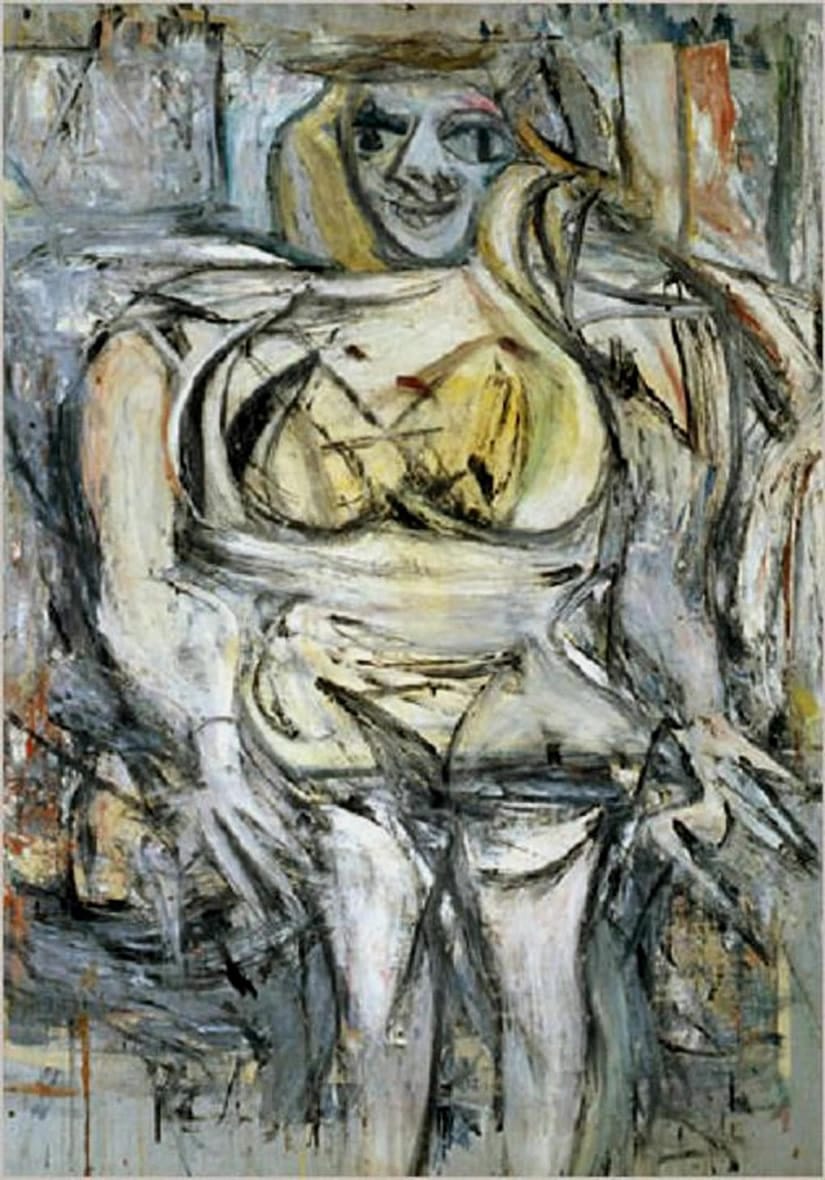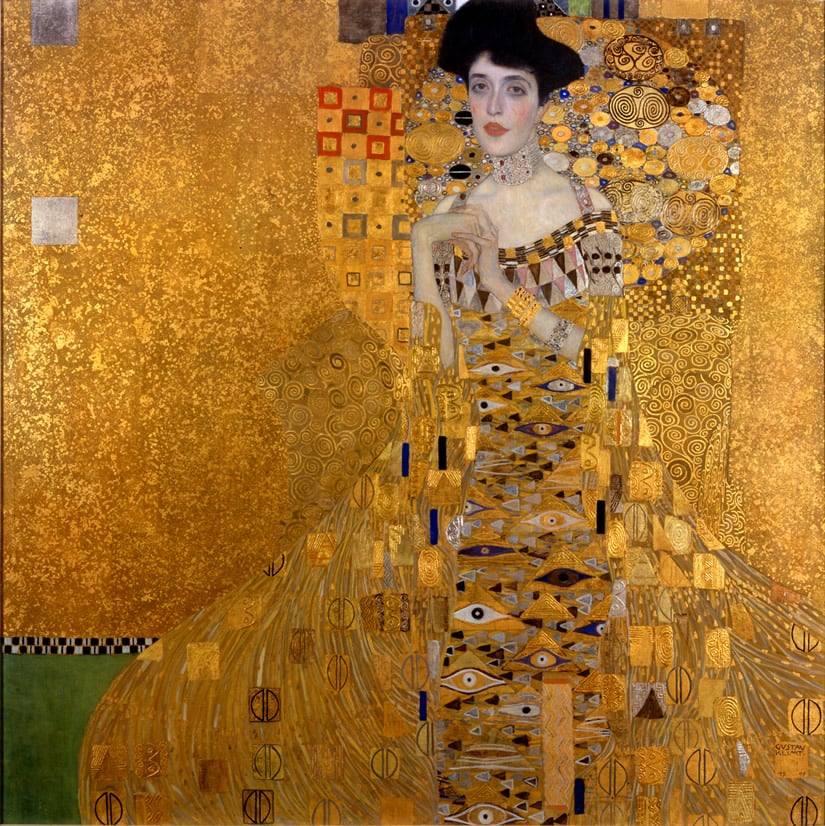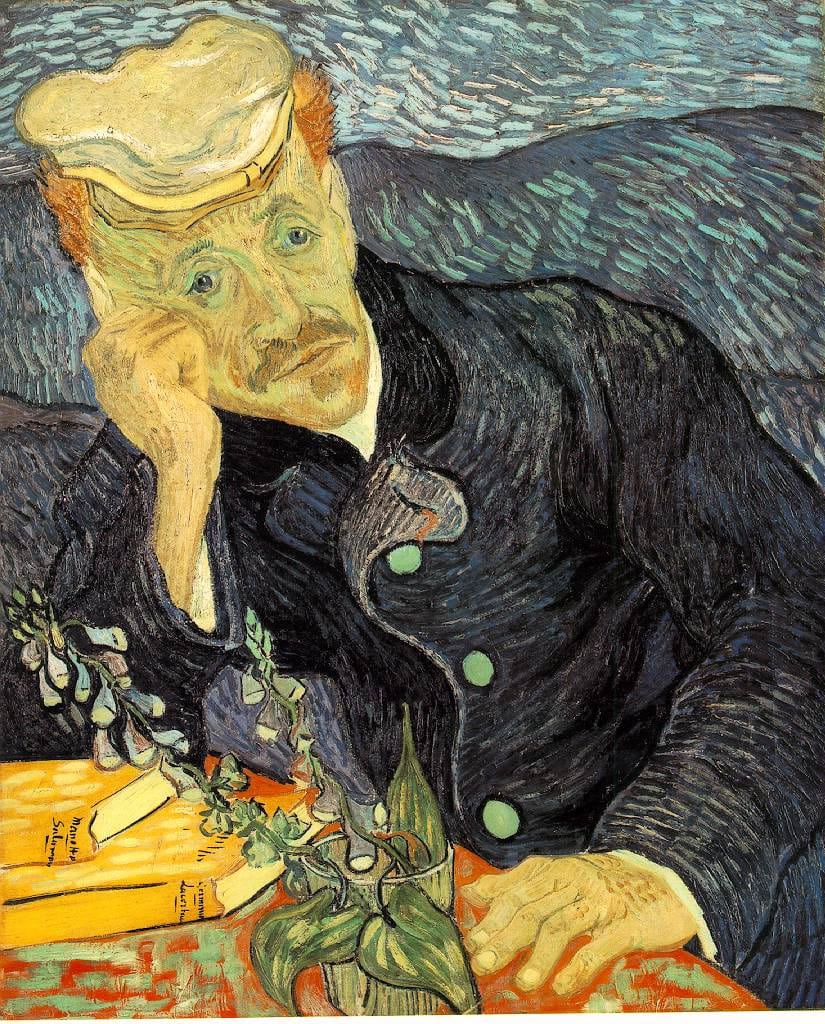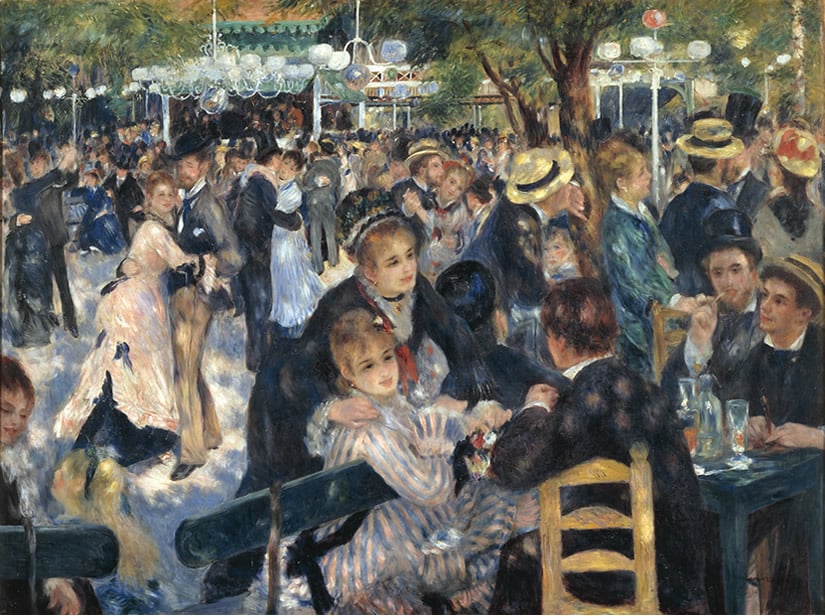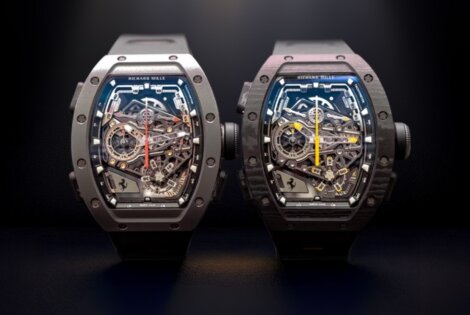Contents
It can be baffling how much a historically significant work of art can go for at auction. Not everybody gets it, but then again not everybody can afford the perspective of a millionaire. For anyone interested in some of the most remarkable and expensive paintings ever sold, we created this list of truly exceptional pieces.
From portraits to landscapes and abstract creations, all paintings have a story to tell. They talk about an era, but most of all about the artists behind them. Every work of art on this list is accompanied by a few key facts about its maker, who more often than not was underappreciated during his lifetime. Centuries later, however, these masterpieces ended up fetching millions of dollars at public and private sales which only the privileged got to attend.
1. When Will You Marry?
It never ceases to amaze us how little-appreciated some artists are in their lifetime and then how incredibly expensive their works become long after their demise. The When Will You Marry? Post-Impressionist oil painting by Paul Gauguin represents one of the most spectacular such stories of late fame: it recently became the world’s most expensive piece of art. [Update: A legal dispute has revealed that a painting thought to be the world’s most expensive artwork is not the most expensive one after all. Paul Gauguin’s 1892 oil painting “Nafea Faa Ipoipo (When Will You Marry)?” sold for $210 million in 2014, $90 million less than originally reported]
About Paul Gauguin
Eugene Henri Paul Gauguin had a strong influence on iconic artists such as Henri Matisse and Pablo Picasso. However, this only happened after his tragic death (morphine overdose) in 1903. During his life, the French Post-Impressionist artist did not manage to raise much interest, though he tinkered with various arts: sculpture, ceramics, print making, painting, and writing.
He was initially a successful stockbroker, during which time he earned a lot of money from both brokering and art dealing. However, the Parisian stock market suffered a great blow in 1882 and crashed, which led to the quick deterioration of Gauguin’s personal wealth. Shortly afterwards he decided to become a full-time painter.
His decision affected his relationship with his Danish wife and her family, who eventually decided to banish him for not staying true to their middle-class values. His vision of romance and realty gradually deteriorated to the point where the artist started to see the world through his own made-up fictions.
As an example, Gauguin tried to portray Tahiti as a place where people spent their time doing nothing else but sing and make love. He did so both in his paintings and in a book that he later wrote to describe his adventures in the French Polynesia. Neither his paintings nor his writings enjoyed any real success in his lifetime, and he eventually ended up bitterly disappointed by reality. His talent and artistic influence were only later fully recognized.
The French artist who created it did not enjoy much attention during his life, and yet this painting was sold to an undisclosed buyer for approximately $300 million (the exact sum has not been revealed). The image depicts two Tahitian women, and it used to be on loan at the Kunstmuseum in Basel for nearly half a century.
During that time it was owned by the family of Rudolf Staechelin, one of the most important Swiss art collectors of the early 20th century. Experts believe the buyer to be Qatar Museums, but the painting will only be delivered to its new owner in January 2016.
When Will You Marry? by Paul Gauguin
2. The Card Players
Painted in the early 1890s, The Card Players series by Paul Cezanne was completed during the artist’s so-called final period, in which he created some of his most acclaimed works. There are five final versions of the scene, all showing Provencal peasants focused on the game of cards. The number of subjects and the size of the paintings varies, but the final three are very similar in composition, showing only two men.
About Paul Cezanne
Recognized as the father of all 20th century artists by masters such as Picasso and Matisse, Paul Cezanne represents the artistic bridge between the 19th century Impressionism and the radically different tendencies of the following century, especially cubism. Like many great artists, he was initially misunderstood by the public, but his desire to break from norms and to freely express himself kept him going. He eventually completely grew out of the conventions of the time.
His exploratory and repetitive brushstrokes are instantly recognizable, and his works show his dedication to understanding human visual perception. Cezanne was preoccupied with the simplification of forms and their reduction to basic geometric shapes such as spheres, cylinders and cubes. He was also fascinated by optical phenomena and tried to render binocular vision in graphic form by painting slightly different visual perceptions of the same subject.
His visual explorations opened a new path for the younger artists of his time and for the ones who followed. In order to achieve a “lived perspective”, Cezanne renounced essential classic artistic concepts, such as single view perspective, pictorial arrangements, and even outlines, which in his vision simply enclosed color. This tendency of altering the objects in order to capture the complexity of what the eye naturally sees later evolved into even greater distortions and eventually into form fracturing as seen in the iconic works of Picasso.
One version was sold in 2011 for a record price, and even though the exact sum has never been disclosed, it is believed to be the second most expensive painting ever sold, estimated to have fetched between $250 and $300 million. The buyer was the Royal Family of Qatar.
A number of drawings and sketches were made in preparation for this project. Over a dozen studies paved the road for the final five pieces, but there is no way to tell for sure what the exact order of completion for each painting in the series was.
The Card Players by Paul Cezanne
3. No. 5, 1948
Often described as a “dense bird’s nest”, No. 5, 1948 is a record-breaking painting by famous American abstract expressionist Jackson Pollock. Its first ever buyer was Alfonso A. Ossorio, who paid $1,500 for it back in 1948. If that sum doesn’t say much to you today, $140 million certainly will. That is how much the painting went for at a 2006 sale, when an unknown buyer added it to his or her collection.
About Jackson Pollock
The unique drip painting technique is instantly recognizable as a Jackson Pollock trademark. You don’t need to be an art connoisseur to know the name behind the iconic No. 5, 1948 painting, as well as all the others in the series.
This totally innovative way of creating art is what Pollock is most famous for as a contributor to the abstract expressionist movement of the 1940s. He first discovered liquid paint in 1936 during a workshop in New York City. This opened a new door for the artist’s creative spirit and he soon started using synthetic resin-based paints, which represented a completely unconventional medium at the time.
He also ditched the traditional art tools and replaced them with pretty much anything that met his creative needs: sticks, hardened brushes, basting syringes. Pollock discovered that sturdier surfaces such as walls and floors worked better for his art than the conventional easels. By placing his canvas on the floor he had the privilege of working on his paintings from various angles and he could even “literally be in the painting”, as he himself pointed out.
Pollock was known to completely disconnect from the environment and everything that was going on around him while he worked. “When I’m in my painting, I’m not aware of what I’m doing”, he said. His painting technique had him constantly move around the canvas in a dance-like manner searching for the right angles from which to add new dimension to his creations. Contrary to what some may believe, his drip paintings were not the result of accidents, but of purpose-driven actions, as well as a complete lack of fear to experiment and adjust while in the middle of the creative process.
This is not only a prime example of very expensive abstract art, but also the most expensive Jackson Pollock ever sold. Prohibitive as that price may be, it is actually completely justified in the world of arts. The rarer a painting is, the more expensive it is going to be.
Also, pieces that have had a significant impact on the evolution of art and the birth of new movements are always going to be more valuable than ordinary ones, and Pollock’s No. 5, 1948 definitely embodies the essence of a new artistic era called abstract expressionism. Plus, the painting is the only one from the artist’s drip series that is not safely displayed in a museum, which makes it incredibly covetable among art collectors.
No. 5, 1948 by Jackson Pollock
4. Le Reve (The Dream)
One of the most expensive oil paintings currently in private hands, Le Reve is a 1932 creation of Pablo Picasso. The world-famous Spanish artist was 50 years old when he painted this, and the young lady in the picture was his 22-year-old mistress Marie-Therese Walter. While distorted characters were very common in the painter’s depictions at the time, some people believe that the dramatically tilted head of the woman was intentionally drawn so as to resemble an erect penis – arguably symbolizing Picasso’s passionate feelings for his lover.
About Pablo Picasso
While Pablo Picasso’s cubist paintings may suggest that he actually did not know how to properly draw, one would be very far from the truth to assume that. Picasso was born in a middle-class Spanish family which valued art very much: his father was a painter, and young Pablo’s first word was a shortened version of the Spanish word for pencil.
His drawing skills were remarkable even from an early age, so starting at age seven he began to receive formal artistic training from his father, who believed in the traditional academic ways of teaching art. By the time Pablo was 13 years old, his master already felt surpassed by his son’s talent and precise technique.
At age 16, the young artist was sent to Madrid’s Royal Academy of San Fernando, which was the best art school in the country. Formal education, though, did not satisfy Pablo Picasso’s need for freedom of expression, so he gradually strayed from traditional techniques, creating his own set of rules.
He became famous for developing and exploring a variety of new styles, such as constructed sculpture (assemblage), collage, and cubism. The latter represents what Picasso is most famous for: an avant-garde movement which he co-developed together with George Braque. Highly prolific, Picasso became widely appreciated for his revolutionary views and accomplishments, and gained remarkable fame and fortune – something that very few artists have the privilege to experience in their lifetime.
With oversimplified shapes and bold contrasting colors, Le Reve last changed hands in 2013, when Steven A. Cohen paid $155 million for it. The seller was Steve Wynn, a casino magnate with poor peripheral vision. That last detail is relevant because it led to the accidental damage of the painting in 2006: Wynn put his shoulder through the canvas, tearing a six-inch hole into it. After paying $90,000 for repairs and having some insurance troubles, he was finally able to sell the painting to Cohen, making Le Reve the most expensive Picasso.
Le Reve (The Dream) by Pablo Picasso
5. Garcon a la Pipe (Boy with Pipe)
Another famous Picasso, Garcon a la Pipe is a 1905 creation that belongs to the artist’s Rose Period. It shows a teenage boy wearing a wreath of flowers and holding a pipe, but the identity of this young man has remained unknown. The artist himself (24 years old at the time) was very vague about it, which suggests that he either didn’t know the boy, or didn’t want people to know who he was.
The creative process involved lots of posing, during which time Picasso had the young man changing positions from standing up to leaning against a wall and finally sitting. The exact placement of the hand holding the pipe was also a detail that took a lot of preparation.
The artistic and historic value of the painting is not really significant, but it has still managed to fetch over $104 million at a Sotheby’s auction in 2004, simply because it is a Picasso. Experts have even been disappointed by “how much the marketplace is divorced from the true values of art”, as curator Pepe Karmel put it.
Garcon a la Pipe (Boy with Pipe) by Pablo Picasso
6. The Scream
The original name of the painting is actually The Scream of Nature, but it is better known as simply The Scream by Edvard Munch. The Norwegian expressionist artist created four versions of the work – using tempera, pastel, and crayon– between 1893 and 1910.
About Edvard Munch
The painting for which Edvard Munch is most famous actually embodies the essence of his artistic direction and even of his personal story. The popular name of the paining is The Scream, and it depicts a troubled person whose expression and figure are distorted by pain or agony.
Growing up without a mother (she died when Edvard was very young) and with an overly-religious father who struggled with mental illness, the artist struggled with fear of hell, death and insanity for all of his life. A series of family tragedies marked his development in a deep way, with one of his sisters dying of tuberculosis at age 16, another sister being institutionalized in a psychiatric institution, and his only brother dying at age 30, only a few months after getting married.
In 1886 Munch finished the first rendition of a painting called “The Sick Child”, which showed his teenage sister on the deathbed next to a grieving woman with her head bowed in sorrow, seemingly for not being able to help the child. This was the artist’s first work for which he left behind the norms of realist representations and used his brushstrokes to express emotions rather than objective realities.
The painting was not received well by critics at the time, but Munch continued to explore this new way of expression and later became a world-renowned initiator of Expressionism: a modernist movement that focused on representing reality solely from a subjective perspective. The physical world becomes less important in an expressionist’s art, and it is even distorted in order to evoke moods, ideas and feelings. Munch’s real success only occurred when he started creating art in this novel and inspiring way.
The composition depicts a sexless screaming person with a movingly agonized expression. The person appears to be standing on a bridge, with a deep orange and red sky in the background. The artist explained his source of inspiration in a hand-painted poem that he placed onto the frame of one of the pastel versions:
“I was walking along the road with two friends – the sun was setting – suddenly the sky turned blood red – I paused, feeling exhausted, and leaned on the fence – there was blood and tongues of fire above the blue-black fjord and the city – my friends walked on, and I stood there trembling with anxiety – and I sensed an infinite scream passing through nature.”
The 1895 pastel-on-board version set a new record price in 2012, when it was sold by Sotheby’s for $120 million. Much more expensive paintings have gone under the hammer since then, but at the time that was a huge price for a painting that was originally expected to fetch around $40 million.
The Scream by Edvard Munch
7. Woman III
For non-connoisseur of art, Woman III is probably one of the strangest and most expensive paintings out there. For passionate collectors, it is a covetable masterpiece which rightfully fetched $137.5 million when it last went on the market in 2006. The buyer was Steven A. Cohen, and the inflation-adjusted price puts it at number 4 on the world’s most expensive paintings list.
Expressionist painter Willelm de Kooning created six versions of it between 1951 and 1953, all inspired by his wife. She became his muse after they first met in 1950, and thus the iconic Woman series began. Highly reminiscent of Picasso’s deconstructive portraits, these works are prime examples of abstract expressionism.
About Willem de Kooning
With a very unique style of painting, Willem de Kooning was one of the visionary artists that formed what became known as the New York School – an informal group where American musicians, painters, dancers, and poets of the 1950s and 1960s created freely, drawing inspiration from avant-garde movements such as surrealism, action painting, experimental music, jazz, and improvisational theater.
De Kooning’s style became known as abstract expressionism, with his iconic black-and-white series (painted approximately between 1946 and 1949) playing a very important role in the history of the movement. While most people don’t see much beyond the densely packed shapes and seemingly random brush strokes, art enthusiasts will always appreciate the spontaneity and free expression of self that is naturally encompassed within Willem de Kooning’s creations.
Woman III by Willem de Kooning
8. Portrait of Adele Bloch-Bauer I
With quite a tumultuous history, Portrait of Adele Bloch-Bauer I is the first of two portraits by Gustav Klimt representing an art-loving lady from Vienna. Adele Bloch-Bauer and his wealthy husband were good friends and patrons of the artist, and Adele became the only model to be painted twice by Klimt.
About Gustav Klimt
One of the artists who initiated the Vienna Secession movement, Gustav Klimt was an Austrian symbolist painter who found most of his artistic inspiration in the female body. Many of his creations are marked by open eroticism, but Klimt also painted landscapes.
During his first period of success as an artist, he made remarkable architectural decorations, but his inclination to paint nudes attracted too much criticism. He consequently decided to no longer accept public commissions – a decision which eventually led him to the famous “golden phase”, or his second stage of artistic success.
Rather private, Klimt did not like to socialize with other artists very much, and he kept his interactions mostly limited to the Secession Movement and his undisclosed lovers. Patrons would have to visit him at home, where he passionately worked very long hours. He did not write much about himself and never made a self-portrait, saying “There is nothing special about me. I am a painter who paints day after day from morning to night… Whoever wants to know something about me… ought to look carefully at my pictures.”
This spectacular 54-inch by 54-inch oil and gold on canvas painting was commissioned by the model’s husband, industrialist Ferdinand Bloch-Bauer, and its completion took three years of work. After Adele’s death and the Nazi invasion of Austria, the masterpiece was confiscated together with the rest of the Bloch-Bauer properties. It was only in 2006 that it found its way back into the rightful heiress Maria Altmann’s hands, as established by a panel of judges.
Not long afterwards, the painting was sold for a remarkable $135 million through Christie’s. It now represents the most spectacular piece in businessman Ronald Lauder’s New York art collection. The rightful inheritors’ decision to sell all of the paintings that were restituted to them by the government was criticized by many. People expected the family to use this opportunity to tell a story of justice after the Holocaust instead of a tale of greed, as they see it.
Portrait of Adele Bloch-Bauer by Gustav Klimt
9. Portrait of Dr. Gachet
Vincent Van Gogh’s intention when painting his famous Portrait of Dr. Gachet was to immortalize the sensitivity, gentleness, intelligence and melancholy of the doctor who helped manage the artist’s health during the last months of his life. He described the project as a “modern portrait”, which was a fitting description for the then unconventional painting.
About Vincent Van Gogh
One of the most recognizable artists that ever lived, Vincent Van Gogh was a great post-impressionist painter, with a remarkable influence on the 20th century art. He drew landscapes, still lifes, portraits and quite a significant number of self-portraits. He was a remarkably prolific artist, producing over 2,100 artworks in only about one decade of activity: he started painting in his late twenties and he passed away at thirty-seven.
Even though he drew as a child, and even worked for an art dealing company, Van Gogh began his career as a painter only later. During his early adulthood, he was a very religious man, with a desire to become a minister, but his experience with religion turned out to be more frustrating than rewarding for him.
His brother Theo encouraged him to explore his artistic side and even connect with an important Dutch artist of the time, named Willem Roelofs. He took his new path very seriously and spent a lot of time studying and drawing. His first major work was finished in 1885, the same year that Van Gogh lost his father. After years of studying peasant characters, he finally created a truly remarkable piece, called The Potato Eaters.
Vincent Van Gogh’s life and artistic activity was tragically affected by mental illness. It was only towards the end of his life that he finally seemed to gain more confidence and control in his work. After moving to France in 1888 and discovering the French impressionists, he seemed to finally find his true personal style as an artist.
At the age of 37, however, he died as a result of an infection from a self-inflicted gunshot wound. After a short and intense life, Van Gogh left the world suddenly, but not without leaving a priceless artistic legacy behind.
Dr. Gachet was recommended to Van Gogh by a former patient of his, who knew of the doctor’s interest to work with artists. Upon meeting him for the first time, the painter felt disappointed by the doctor, describing him as “sicker than I am”. Soon afterwards, though, he found many similarities between them, both mentally and physically, and ended up being very fond of his caretaker.
In 1990, after changing hands a few times over the years, the first version of the portrait broke the record for the most expensive painting at the time, by fetching $82.5 million at a Christie’s auction. After the demise of his buyer six years later, the whereabouts of the painting remained undisclosed. To this date, the portrait remains the most expensive Van Gogh painting.
Portrait of Dr. Gachet by Vincent Van Gogh
10. Bal du Moulin de la Galette
Bal du Moulin de la Galette (popularly known as Dance at Le Moulin de la Galette) is one of the most notable masterpieces of the Impressionist era. It was painted in 1876 by Pierre-Auguste Renoir, who beautifully capture the atmosphere of the typical Sunday afternoon dance at Moulin de la Galette, in Paris.
About Pierre-Auguste Renoir
Contributing greatly to the development of the Impressionist movement, Pierre-Auguste Renoir was a French painter who loved and celebrated beauty, especially in the female figure. His talent for drawing was apparent from childhood, so when as a boy he worked in a porcelain factory, he was asked to decorate fine china.
He later went on to formally study art and meet a few important artists of the time, including Alfred Sisley and Claude Monet. While his success came slowly, Renoir did eventually become a highly regarded and very fashionable painter of his time. His work first received positive reactions at the Paris Salon of 1868, where Lise with a Parasol gained much attention.
The artist eventually became the co-founder of Impressionism, together with his friends Monet, Cezanne, Pissarro and Degas. The five of them decided to exhibit their paintings independently in 1874 in Paris, and that event became the world’s first Impressionist exhibition – which was actually not a very big success at the time.
Shedding the traditional styles and techniques, the artists created what people called “impressions”, rather than accurate and highly detailed representations of reality. Renoir loved working with brighter colors to create more luminous compositions, and he also enjoyed mixing various types of brushstrokes in order to best illustrate his visions. His three sons – Pierre, Jean, and Claude – inherited his artistic inclinations and went on to become an actor, a filmmaker, and a ceramic artist, respectively.
Working class Parisians of the time would gather there every week, all dressed up nicely and ready to dance, socialize, enjoy drinks and eat ‘galettes’ – a type of crusty cakes. Some of the characters in the painting were inspired by real people who regularly went to the dance, as the artist’s civil servant friend mentioned in his memoir called Renoir et ses amis.
There are two versions of the painting, both oil on canvas, but one is significantly smaller than the other. Experts could not determine which of the two was painted first, and other than their size, the differences between them are not significant: the composition is identical, and the colors are very similar, but the smaller painting flaunts a more fluid and spontaneous in execution.
The large version is safely displayed in the Musee d’Orsay, and has been since 1986. The smaller one, however, has been in private hands for many years. Its current owner has remained undisclosed, but the last public purchase happened in 1990, when the same collector who also bought the famous Portrait of Dr. Gachet by Van Gogh paid $78 million for it, making it the most expensive Renoir painting ever.
Bal du Moulin de la Galette by Pierre-Auguste Renoir

